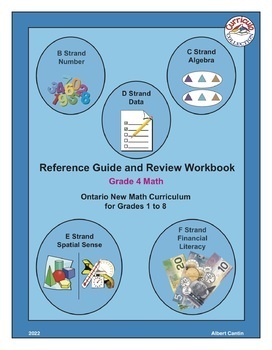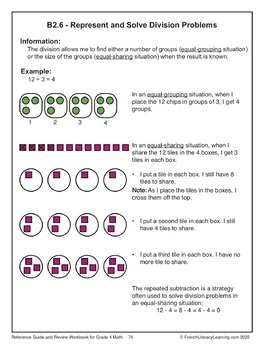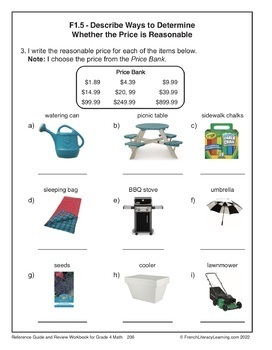I04N-Ontario New Math Curriculum, Grade 4
- PDF
Description
About this Reference Guide and Review Workbook…
Grade 4 welcomes the junior students. With more language skills under their belt, students are becoming better at orally describing their thinking and reasoning. They may find different pathways to solve problems and share them with their peers. Organization becomes an integral part of their learning skills journey through graphs, surveys, shapes, and more. Again, it is the beginning of a new adventure in math land! In an effort to further improve their math skills, the following Reference Guide and Review Workbook has been developed in the most practical and straightforward way possible. Here, in short, is the simplified plan for the development of this document.
The Ministry of Education guide’s 49 specific expectations, strands B to F, in the Ontario New Math Curriculum for Grade 4, are developed to revise all the concepts learned during this year of study. Each specific expectation is developed into a block that occupies two or more pages. Because some expectations contain more material, we have broken them down to present only a few items at a time; they then span several pages.
Each block starts with an entry page for the teacher and develops a specific expectation in the same order as it is presented in the Ministry of Education guide. A simple definition of keywords or a few words of information are provided, in addition to an example explaining the terminology and procedure to be followed. After reviewing and understanding the targeted skill, students are given the opportunity to apply it through a few learning activities that are presented on the following pages. The development of the activities is directly inspired by the teacher supports, key concepts, and notes contained in the Ministry of Education guide.





